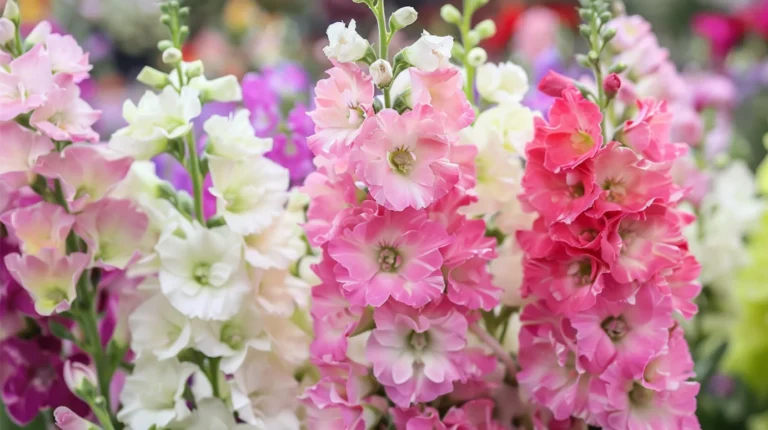A Comprehensive Guide to Harvesting Hellebore Seeds for Plant Propagation

Hellebore, scientifically known as Helleborus spp., is a stunning flowering perennial that brings color to the garden long before spring arrives. With blooms available in a spectrum of hues including yellow, green, red, pink, and even purple or black, this plant is a beautiful addition to any landscape.
In USDA Hardiness Zones 4 to 9, you may spot hellebore flowers peeking through the snow as early as January. This early blooming period makes it a popular choice for gardeners looking to add interest to their winter garden.
If you are already growing hellebore or considering adding it to your garden, understanding how to collect seeds for plant propagation is essential. By harvesting seeds properly, you can grow new plants and expand your garden effortlessly.
Life Cycle of a Hellebore
To effectively collect hellebore seeds, it’s crucial to understand the plant’s life cycle. The anatomy of a hellebore bloom consists of an inner flower known as a “nectary” surrounded by colorful sepals. Beneficial insects are attracted to the sweet nectar contained within the flower heads, leading to pollination.
Once the flowers are fertilized, the nectary falls away, and seed pods begin to form. As the pods mature, the sepals fade and eventually dry out, turning from green to brown. Inside the mature pods, tiny black seeds ripen and are ready for collection.
Seed Collection Methods
To ensure successful seed collection, it’s important to gather seeds before they drop naturally. Here are four effective methods for collecting and extracting hellebore seeds from your plants:
1. Harvest Flower Heads
- Use sharp pruners to snip off the entire flower head.
- Empty the flower heads into a container.
- Rub the pods until the seeds fall out.
- Collect the seeds in an envelope or container, discarding the chaff.
2. Crumble Flower Heads
- Rub each flower head over a container to release the seed pods.
- Remove the chaff and collect the seeds.
- Dispose of the chaff and store the seeds in a suitable container.
3. Bag Flower Heads
- Enclose flower heads in small drawstring mesh bags to prevent seed loss.
- Check the bags regularly for dry seeds.
- Collect the seeds and discard the chaff.
4. Bag Entire Plants
- Cover entire plants with large drawstring mesh bags.
- Shake the bags periodically to check for dry seeds.
- Harvest the seeds and dispose of the chaff.
Each seed collection method has its advantages and drawbacks, so you can experiment with different techniques to find what works best for your garden.
Remember to sow collected seeds immediately at a depth of 1/3 to 1/2 inch for optimal germination. Hellebore seeds do not store well and require cold stratification before sowing if not planted immediately.
The Beauty of Helleborus
Hellebore plants are known for their intriguing colors and unique characteristics. With approximately 20 species in existence, hellebores offer a wide range of possibilities for gardeners.
When collecting seeds from hybrid hellebores, it’s important to note that the resulting plants may vary in color due to cross-pollination. While not all seeds may germinate successfully, collecting seeds allows you to experiment with new plantings and enjoy the surprises that come with growing hellebores from seed.
In addition to seed propagation, hellebores can be propagated through division, tissue cultures, and micropropagation. These methods provide alternative ways to expand your hellebore collection and share your plants with fellow gardening enthusiasts.
Whether you choose to collect seeds or propagate through other methods, hellebores offer a unique and rewarding experience for gardeners of all skill levels. By learning how to harvest seeds and propagate your plants, you can enhance your garden with the beauty of hellebores throughout the year.
Conclusion
In conclusion, collecting hellebore seeds for plant propagation is a satisfying and educational process that allows you to explore the beauty and diversity of these stunning plants. By understanding the life cycle of hellebores and utilizing effective seed collection methods, you can grow new plants and add interest to your garden effortlessly.
Experiment with different seed collection techniques and propagation methods to find what works best for your garden. Whether you choose to collect seeds, divide plants, or explore tissue culture, there are endless possibilities for expanding your hellebore collection and sharing your plants with others.
Embrace the art and science of helleborus propagation, and enjoy the beauty of these captivating plants in your garden. Happy gardening!
Have you tried propagating hellebores in your garden? Share your experiences and insights in the comments below!
For more gardening guides and tips, be sure to check out the following resources:
- What Is Hellebore Black Death?
- 11 of the Best Double Hellebore Varieties for the Late Winter Garden
- Are Hellebores Toxic to Animals or People?
Explore the Beauty of Hellebores
Discover the joy of hellebore propagation and add these stunning plants to your garden today. Whether you’re a beginner or experienced gardener, hellebores offer endless possibilities for creativity and enjoyment in the garden. Enjoy the beauty of hellebores and the wonders of plant propagation in your own backyard!





